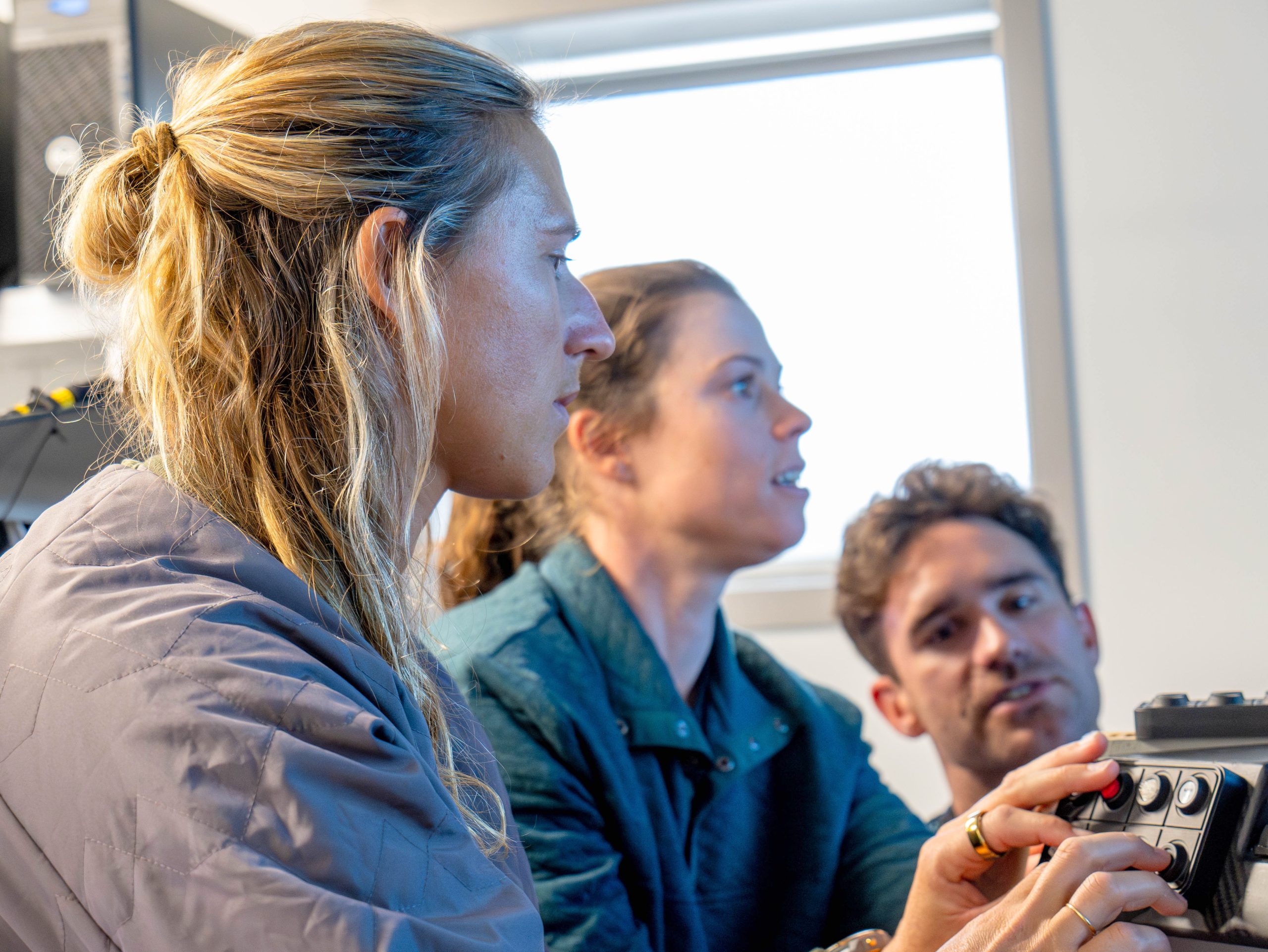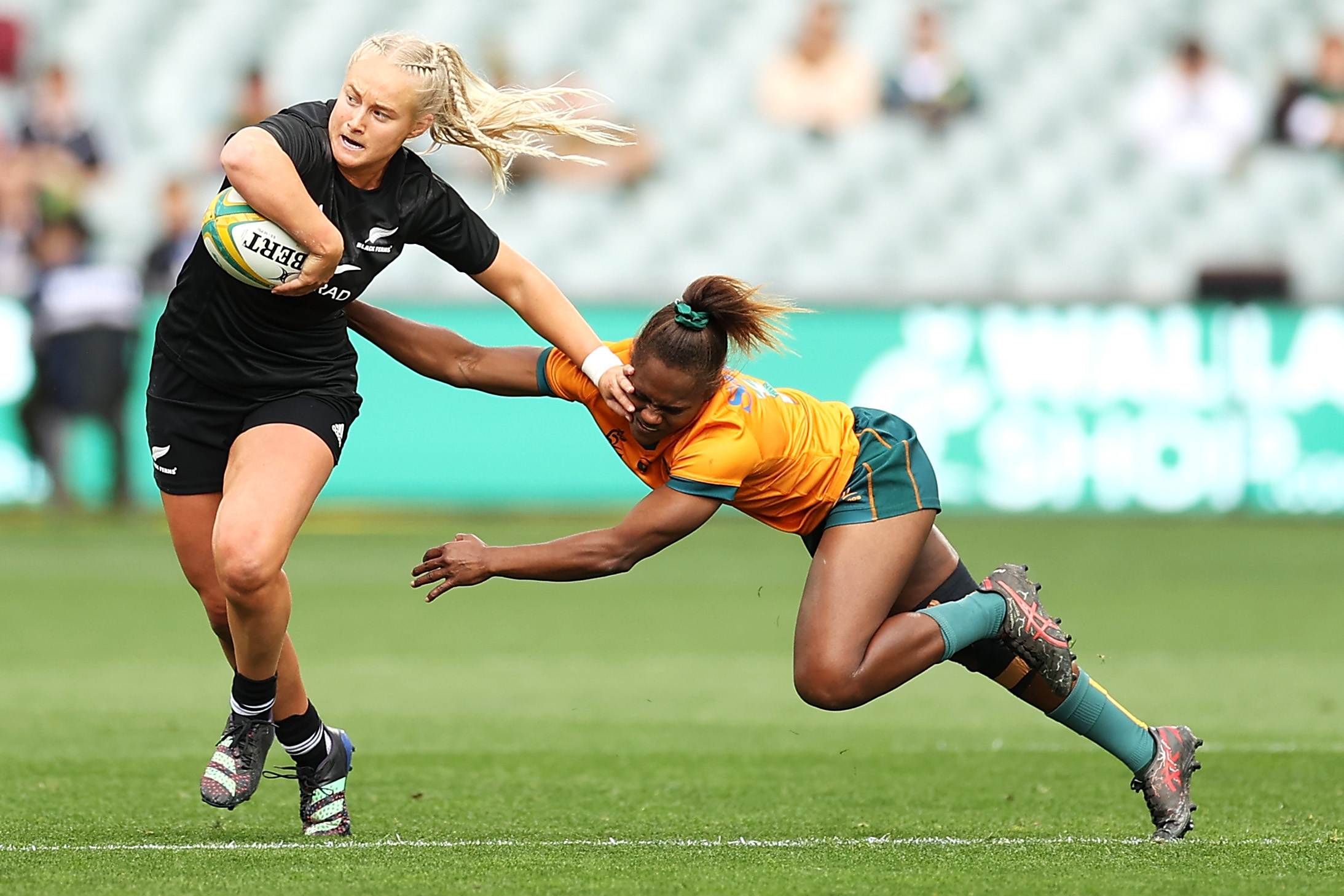Peacemaker to Am Cup sailor – women on a new tack
When Hope Goddard Iselin became the first woman to sail in the America’s Cup, on board Defender in 1895, her role was defined as part-photographer, part-timekeeper, part-peacemaker.
Strategically positioned between the crew doing the grunt work and the afterguard making decisions, the 27-year-old American socialite was a skilled, cool-headed sailor in her own right. Yet newspapers of the time called her “the mascot”; the good-luck charm on board two winning America’s Cup yachts.
What would Goddard Iselin think today – almost 130 years later – seeing women sail in their own America’s Cup regatta? Taking one serious step closer to crewing with their male counterparts for the world’s oldest sports trophy?
Maybe she’d say: ‘What took you so long?’

By simply lining up off the Barcelona beachfront in October, the five Kiwi sailors contesting the first Women’s America’s Cup will make history. But that’s not enough.
Like their male team-mates defending the Auld Mug at the same time, they’re in it to win it.
“It’s remarkable how strong the team is for a first crack at it,” says Emirates Team New Zealand coach Ray Davies. “They’re an amazing team with so much sailing experience.
“In fact, it was a hard job selecting from a deep pool of female talent. And it was fantastic to see how quickly they learned to sail the AC40 on our simulator.”
The five who make up the Team NZ women’s crew have compelling credentials – world champions and Olympic medallists – and are in the prime of their sailing careers. Over eight months, they’ll get to grips with sailing the ultrafast 12m foiling monohull in various training camps with Team NZ – in Auckland, then Barcelona.
But right now, they’re waiting for their boat to turn up – stranded in the war-torn Middle East.
What is the Women’s America’s Cup?
The America’s Cup is 173 years old, but through its 36 editions, only a handful of women have ever been part of the sailing teams for the Cup match. Women like Iselin, Gloria Vanderbilt in the 1930s and Dawn Riley in 1992.
In modern times, there’s been chatter of levelling the playing field to give female sailors a better chance to race alongside men. Then Cup holders Emirates Team New Zealand and Challenger of Record, Ineos Britannia, wrote the first Women’s America’s Cup into the 37th America’s Cup protocol. Now every team in the Cup regatta must have a crew in both the women’s and youth regattas, contested in Barcelona towards the business end of America’s Cup racing.
“A lot of people have talked about it in the past, trying to make it a more inclusive sport, but we’ve taken measures to ensure it actually happens this time,” says Davies. “It’s exciting to see the female and youth talent coming through and give them experience on these AC40 boats. Until you give them time on the water, it’s very hard for anyone to get up to speed.”

Elise Beavis, a world champion foiler and Team NZ designer, is excited to finally see a pathway for female sailors.
“It transitions them into a paid professional sailing career,” says Beavis, who helped run the crew trials with Team NZ sailor Josh Junior. “I guess you hope in the future this event might not be needed. But at this stage, it’s giving women my age an opportunity they’ve never had.”
Team NZ hope the AC40s will have their own world circuit after the America’s Cup. “That will give females the chance to keep sailing, keep fresh and learning about these boats right up until the following America’s Cup – where it would be fantastic to see them on board the big boats too,” Davies says.
When and where will it be raced?
The Women’s America’s Cup will be sailed from October 11-17, with the final match race running between flights of the America’s Cup match between Team NZ and the successful challenger. That guarantees prime-time viewing for women’s sailing – something we’ve only really seen at the Olympics.
The teams will be based at Port Olimpic on the Barcelona waterfront, with racing just off the beach in Barcelona.
Who’s racing?
Teams from 12 nations will take part. Alongside the six America’s Cup teams who’ve committed to racing in Barcelona (from New Zealand, the UK, USA, Italy, Switzerland and France), entries have been received from yacht clubs in Spain, the Netherlands, Canada, Germany, Sweden and Australia.

Cup teams who own AC40s – for testing and pre-Cup regatta racing – will have a distinct advantage over those nations who won’t get time in the boats until they’re in Barcelona.
The fleet will split into two groups for an eight-race series, with the top six progressing to a four-race semifinal. The top two crews race off in a single match race to find the inaugural Women’s America’s Cup champion.
What boat will they race?
The AC40 foiling monohulls will be converted to a strict one-design set-up – so the boat, controls, sails, foils and mechanisms are all standardised. It evens out the fleet and makes it a contest of sailing skills, not superior technology.
“The AC40 isn’t a physical boat to sail, so we’re expecting the women to sail the boat equally as well as guys, and therefore creating a very even playing field in the future,” Davies says.
“So many classes of boat come down to a physical contest, which is obviously hard for the women to compete with. But as soon as we have a boat that’s not purely physical then all bets are off. It comes down to the best communicators and the best sailors.”

Fitness isn’t a factor on the AC40 – there’s no running across the deck or hauling on ropes. The four crew on board spend the whole race sitting down – a driver and a trimmer positioned on each side of the boat. Where the driver traditionally sits furthest back, on an AC40 they’re in the front cockpit, giving them an unobstructed view; a trimmer is in a ‘go-kart seat’ behind them.
The trimmers adjust the jib and sails with buttons, while the drivers control the foils.
“The AC40 is very fast. A few of these women and youth might have experienced sailing at around 30 knots, but in the AC40 you’re getting up to the high 40s – high speed and high closing speed,” Beavis says.
The women of Team NZ (other than Liv Mackay) have yet to sail on the AC40, which is currently stuck in Jeddah.
Who is the Team NZ women’s crew?
Jo Aleh is undoubtedly one of New Zealand’s top sailors – an Olympic gold and silver medallist in the 470, now campaigning for her fourth Olympics in the 49erFX.

“She only does something to win it,” Beavis says. “Jo’s really driven towards winning and making sure her team is pushing in that direction.” She already has strong relationships with AC40 crew-mates Molly Meech (her 49erFX partner gunning for the Paris Olympics) and Erica Dawson, who she coached in the Nacra 17 at the Tokyo Olympics.
“She has a lot of sailing experience and she’s branched out into the F50 (a foiling cat) and wing foiling so she knows how to generate speed on foils.”
Molly Meech is a world champion and two-time Olympian in the 49erFX skiff, winning silver at the Rio Games.
“Molly’s level-headed and calm, and gives a nice balance to Jo. They’ve worked out what works well in their relationship and that should transfer to this crew too,” Beavis says.
Erica Dawson sailed at the last Olympics just weeks after fracturing her leg in a training accident, finishing 12th in the Nacra 17 cat. She’s gutsy and determined. As a kid, she was the first female to ever win the Starling nationals.
“She has amazing tenacity, is a real hard worker, but also has a great personality, can bring light to life and excitement to the team,” Beavis says. “But she will also really push the crew to go out and do it well.”
Liv Mackay has experience driving the AC40 during a six-week stint working with Team NZ last year. She’s also skipper of the Live Ocean ETF26 foiling catamaran and a regular crew member of the New Zealand SailGP crew with Peter Burling and Blair Tuke. So she knows how to foil.
“She’s used to those high closing speeds and staying calm under pressure,” Beavis says. “She has that good relationship with the ETNZ crew and that all contributes to her large picture of knowledge.”

Gemma Jones sailed at the 2016 Olympics in the Nacra 17, finishing an impressive, but frustrating, fourth. She then took a break from high-performance sailing, focusing on her career as a senior business consultant with EY.
“She came into the trial with heaps of enthusiasm, great knowledge and the ability to work with everyone,” Beavis says. “The other trialists talked about her calming presence. It’s a hugely valuable asset.”
Jones also grew up around the America’s Cup – her dad, Murray, sailed in five Cup campaigns and coached Team NZ – and she also commentated on the last Team NZ victory in Auckland. “But she’s come in with a clear mind, able to see it from an outside perspective.”
Veerle ten Have is campaigning for her first Olympics, in the IQ Windfoil, but is also the sole female sailor in Team NZ’s Youth America’s Cup crew. The Youth AC is raced before the women’s event, so she will be available to step into the women’s crew if needed.
“She’s a fun-loving person with maturity and an eagerness to learn,” says Beavis. “Although she comes from a windfoiling background which has a different terminology than sailing, she’s proved to be a quick learner, which is a very important skill.”

What’s next for the crew?
The key to success in Barcelona is giving the women’s crew as much time as possible in the AC40 – bringing them into Team NZ’s Auckland base for a series of training camps.
But that schedule has to be reshuffled, with war in the Middle East – and in particular, attacks on ships in the Red Sea – delaying shipping the AC40 from Jeddah, where it was raced in the America’s Cup preliminary regatta in December.
It now looks like the women will finally get out on the water in March.
“Timing will also be determined by the other sailing commitments the women have,” Beavis says, with four of the six (including ten Have) hoping to sail at the Olympics in July and August. “But we’re really trying to maximise our time with them.”





